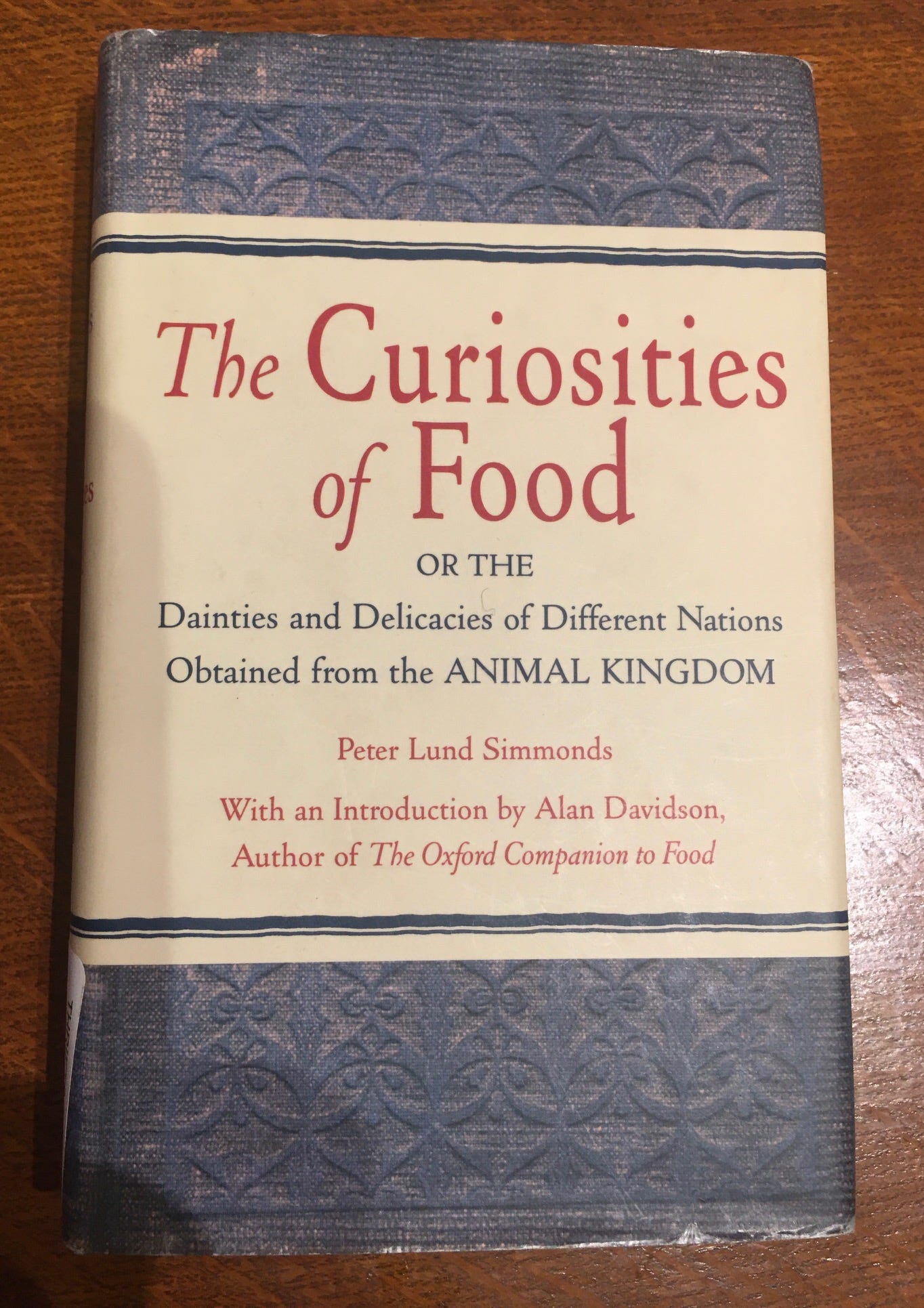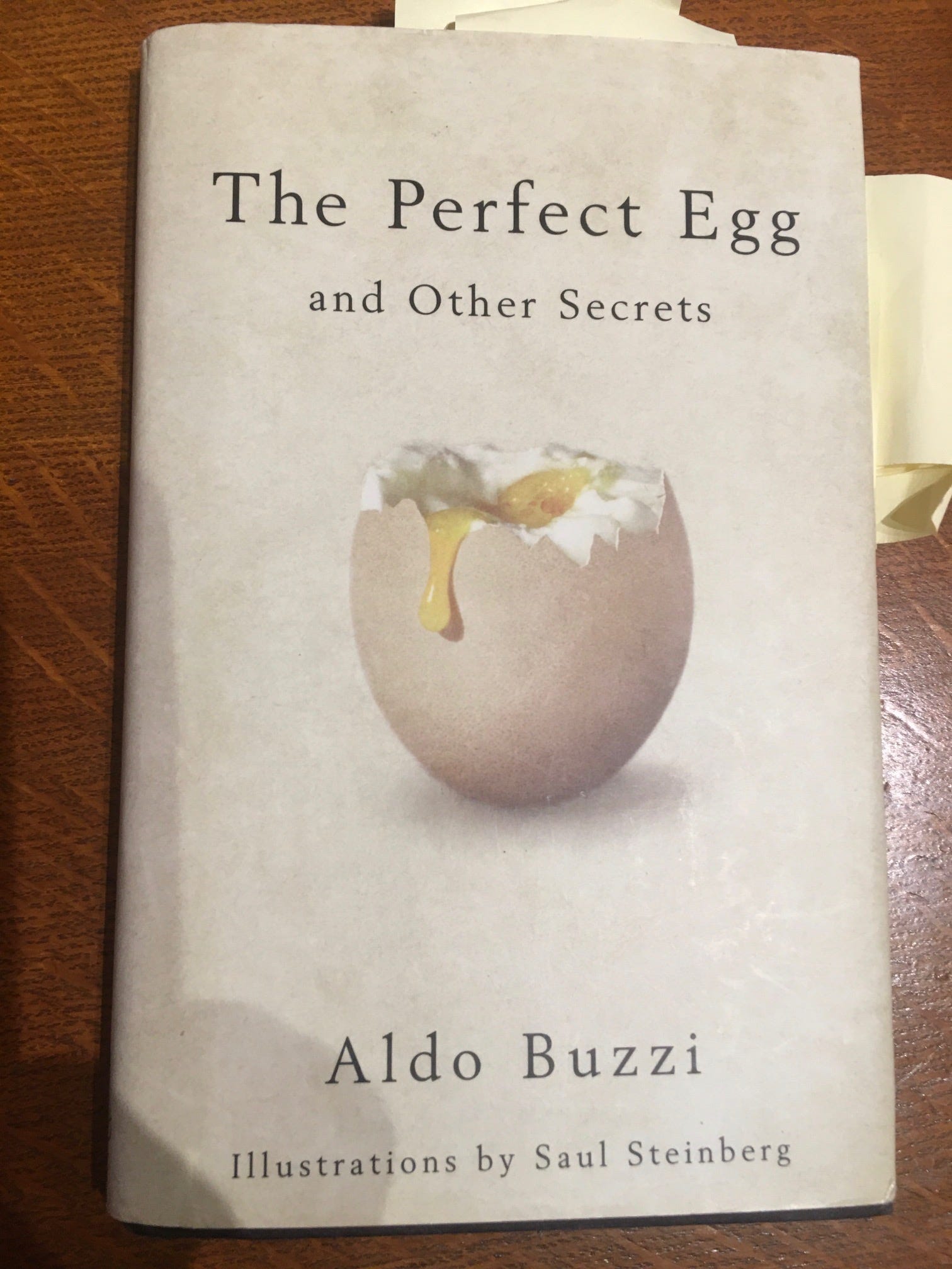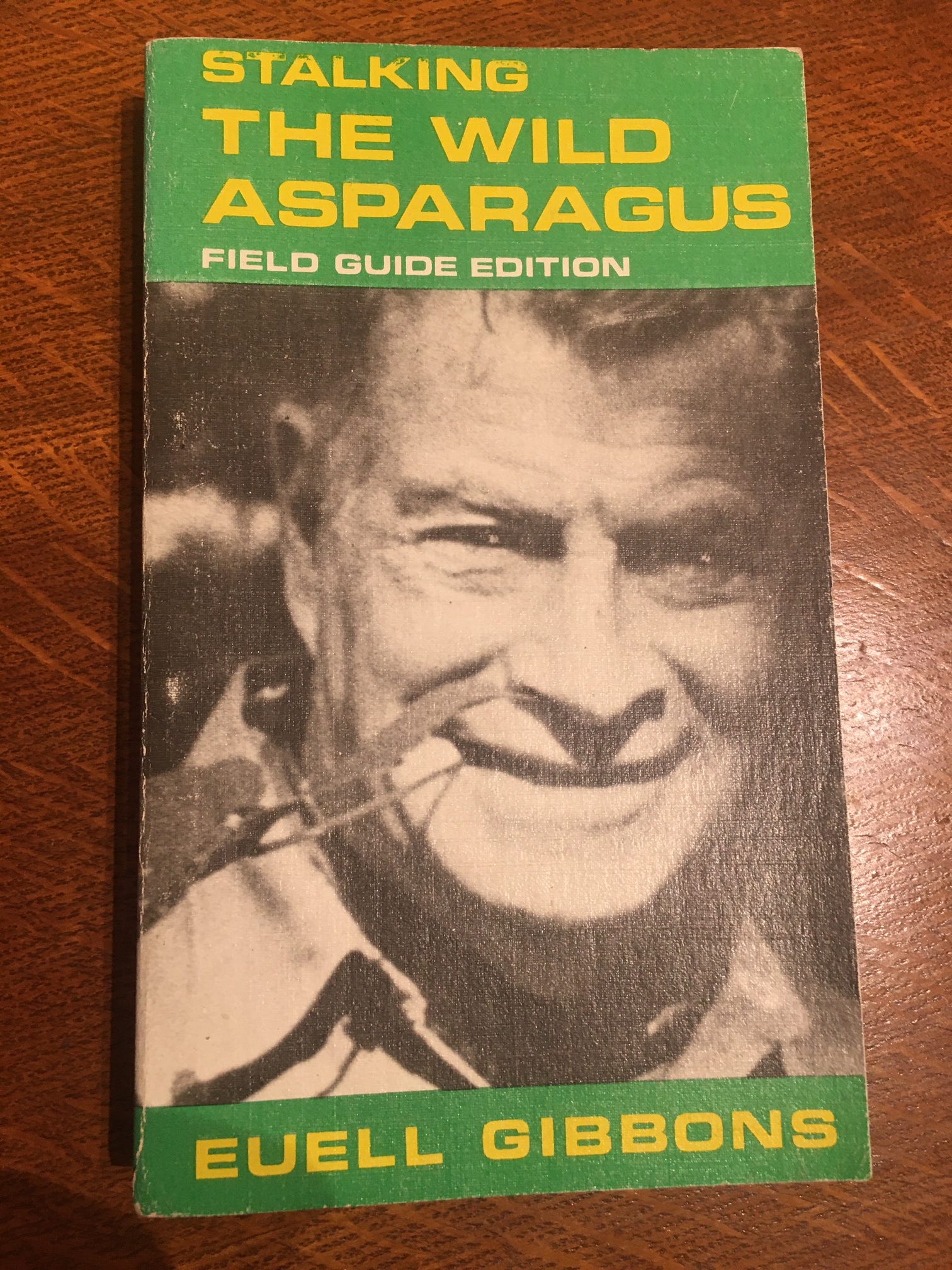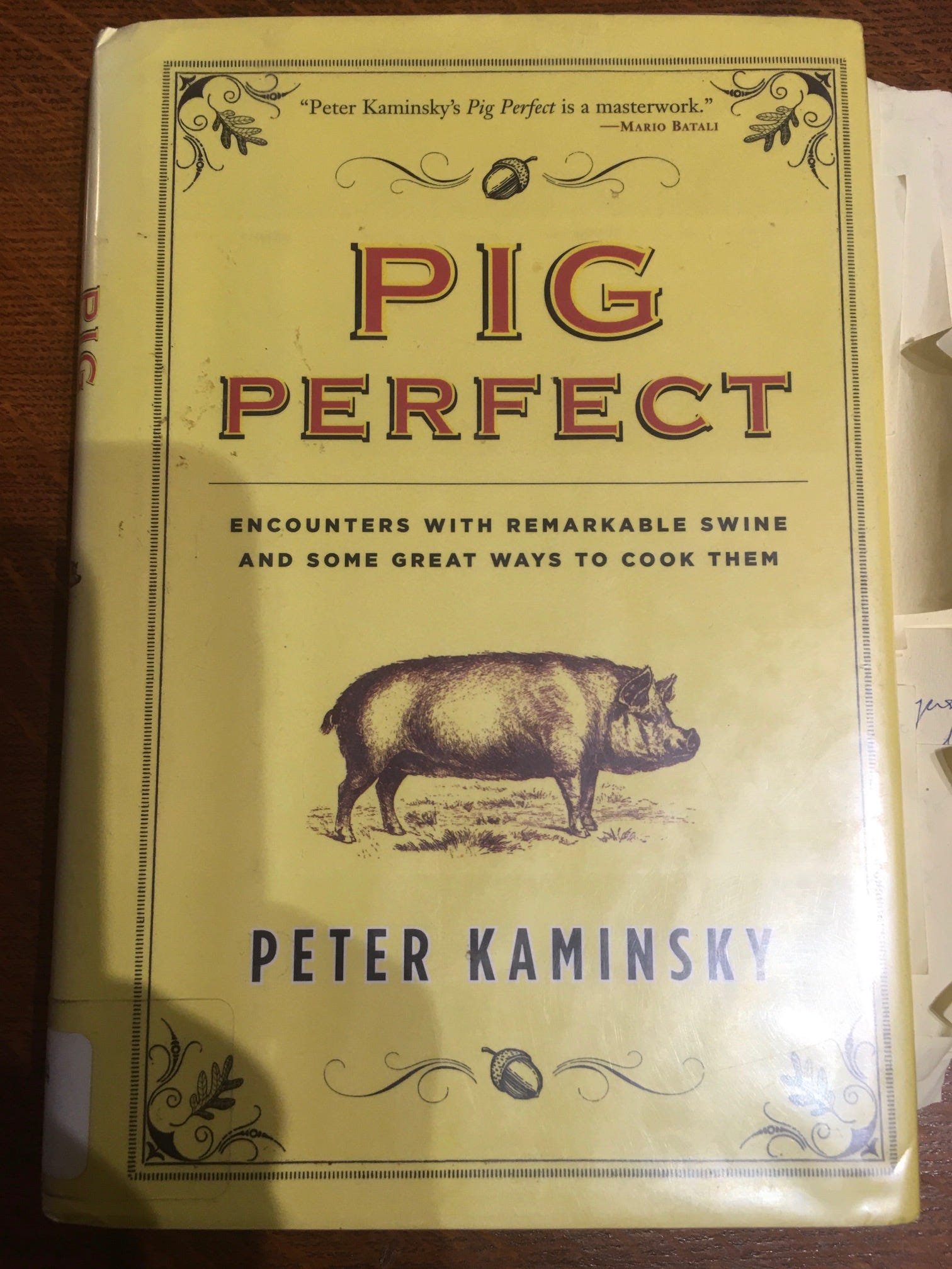No Recipes!
A Half Dozen Amazing Books from the Frontiers of Food

A Half Dozen Amazing Books from the Frontiers of Food History
I’ve got a lot of cookbooks at home. There’s no way I’ll ever be able to re-sell the ones I love best, because they’re stained with olive oil, tomatillo sauce, and sundry, unidentifiable ingredients. (Will future scholars be able to exactly recreate 21st-century meals from the organic remains found splashed on cookbooks?) Looking at them, I can retrace decades of culinary explorations, starting with the awakening brought about by my university-era purchase of Rick Bayless’s Authentic Mexican, which propelled me beyond the realm of Tex-Mex and beef-and-bean burritos. The journey continues, most recently with the addition of Olia Hercules’s inspiring Mamushka: Recipes from Ukraine and Beyond.
At my office, I have another collection of more abstruse food books. Only a few of them feature recipes. There are the major reference books, among them Alan Davidson’s essential Oxford Companion to Food, Waverley Root’s charmingly encyclopedic Food, Gordon M. Shepherd’s mind-bending Neurogastronomy: How the Brain Creates Flavor and Why it Matters, Harold McGee’s On Food and Cooking (all about the chemistry and science of the kitchen), and Oretta Zanini de Vita’s Encyclopedia of Pasta.
And then there are the food-idea books. These are the ones that have changed the way I think about what I eat. No glossy pages, no food-stylist-arranged photo spreads, no celebrities in chef’s whites on the covers. What they share is scholarship, passion, and an appreciation of the fact that food is about more than just calories, or the ingredient-of-the-month—that food has always been a driving force in the story of humanity. Here are a half dozen of the ones that marked me in the writing of The Lost Supper. And, fair play, I marked these books too: you can tell by all the Post-It notes bristling out of their pages, each marking a moment I paused and said: “Wow, that’s new to me!” (OK, there are a few recipes in these books, but they are almost always included to illustrate deeper themes.)
And, because I’m like that, I’ve thrown in a few that are just downright weird, and deserve to be more widely read. Here they are, in no particular order.
No. 1
The Curiosities of Food

“The armadillo, remarkably for its laminated shell, when baked in its scaly coat is a good treat, the flesh being considered delicate eating, somewhat like a rabbit in taste and colour.” —Peter Lund Simmonds
Originally published in London in 1859, this is a beautiful example of wide-eyed, world-embracing Victorian curiosity. Imagine Charles Darwin with a ravenous appetite. (Well, an even more ravenous appetite, for he was a good trencherman.) Simmond’s foodstuffs come from the “animal kingdoms,” with forays into arachnidia, grallatores (ostriches et. al.), and pachydermata. Of the latter, he writes of elephants’ toes: “Pickled in strong toddy vinegar and cayenne pepper they are considered in Ceylon an Apician luxury.” (Love that Simmonds presumes his readers are familiar with Apicius, the Roman gourmet!)
No. 2
100 Million Years of Food

“If your ancestors didn’t consume much starch or dairy, neither should you. The take-home message: eat what your ancestors ate.” —Stephen Le
A man after my own heart, Stephen Le, who trained as a biological anthropologist, roamed the world, from Thailand to Crete, taking a close look at what was on people’s plates, from grubs to filet mignon. He makes mincemeat of Paleo dieters, who claim we should all be eating like Ice Age hunter-gatherers (if that were the case, there’d be more shellfish, termites, and leafy greens in their diet than red meat). He also questions Michael Pollan’s assertion that you should only eat things your grandma, or anybody in 1900, would have recognized as food. (In that case, bring on the Cracker Jack and the Doctor Pepper!) For Le, the sweet spot is what your ancestors ate 500 years ago, before the Green and Industrial Agricultural Revolutions. That explains why my Ukrainian and Irish genes respond so well to fermented dairy, beets, potatoes, as well as my ability—alas—to metabolize alcohol so efficiently.
No. 3
The Perfect Egg and Other Secrets

“The writer who never talks about eating, about appetite, hunger, food, about cooks and meals, arouses my suspicion, as though some vital element were missing in him.” —Aldo Buzzi
I want to go to the caffè, right now, order a big old Negroni, and spend an afternoon talking with this Signore. (Too late, alas.) Aldo Buzzi was an architect, a traveler, a pioneer in neo-Realist cinema, and a Milanese. And because he was the latter, he could talk, and write, about food. He did so, though, with singular charm. This is a slender volume, whimsically illustrated by Steinberg, that delves into the difference between edible and inedible pigeons, the absurdities of Futurist cuisine, and the origins of “graveyard stew.” The book is actually full of recipes, but they’re told, rather than written. The way you’d share the technique for making your family’s ragù with somebody on the terrace of the local caffè. Buzzi’s secret to making the perfect egg has changed my life. (And no, you won’t hear it from me.) It’s sprezzatura, the Italian knack for making the difficult seem effortless, defined.
No. 4
Stalking the Wild Asparagus

“My love affair with nature is so deep that I am not satisfied with being a mere onlooker, or nature tourist. I crave a more real and meaningful relationship. The spicy teas and tasty delicacies I prepare from wild ingredients are the bread and wine in which I have communion and fellowship with nature, and with the Author of that nature.” ―Euell Gibbons
I stumbled upon this book in the depths of the pandemic, when lockdowns, which kept me away from other humans, had the salutary effect of driving me into nature. Born a Texan, raised in New Mexico, and later a Quaker, Gibbons was the 20th-century’s celebrity forager, trading quips with Johnny Carson on The Tonight Show about chowing down on pine trees. Along with The Edible Wild, this became a companion in my own foraging expeditions, and taught me that sumac, ferns, and cattails can make good eatin’.
No. 5
Scoff

“For me and many people lucky enough to holiday in Cornwall, a hot Cornish pasty tastes of wave-bashed swimming, with peppery notes of almost vertical coastal paths, a whiff of unreliable weather and the comforting warmth of happy day. There’s usually an aftertaste of lying on the beach, comatose.” —Pen Vogler
Class is built into every aspect of our lives. Americans often deny it exists. (Paul Fussell is good on this, as is Isabel Wilkerson, who re-casts class as “caste” in her book of the same name.) To outsiders, the British often seem comically unaware of how class is built into their every utterance—and even into their attempts to escape class by shedding RP English for Yobbo-Cockney. Pen Vogler, whose recreations of 18th century feasts are the stuff of legend, digs deep into how, since 1066, food has become enmeshed in class distinctions, and distinctions within distinctions. I’ve had kedgeree, and I’ve spooned on the clotted cream, but I had no idea how fraught each mouthful actually was until I read Scoff. (As a companion, I highly recommend Delizia!, by John Dickie, who shows how Italian food, which is styled as down-to-earth and rural, is actually very much a product of urban modernity.)
No. 6
Reinventing the Wheel

“Cheese gives us a unique opportunity to taste the totality of a farming system, to experience an agricultural gestalt within a single product.” —Bronwen and Francis Percival.
I had the privilege of meeting Bronwen beneath the cool railroad arches of Neal’s Yard Dairy in London when I was working on The Lost Supper. This is simply the best book on cheese, and dairying—and, even more, the value of mindful farming—that I’ve ever read. A labour of love from a California-born, goat-raising epicurean and her husband Francis, a wine-lover turned turophile. Their book is a perfect illustration of the fact that writing about food—well, when it’s done right—is always about more than food.
And one bonus book, for Lucky No. 7

Speaking of labours of love, Kaminsky’s Pig Perfect made its author into a pig farmer, with a preference for the endearing Ossabaw breed, whose isle of predilection I got to visit. Forget the Mario Batali endorsement on the cover. This is a wonderful book—I especially loved the thought-provoking passages on how Spanish pigs shaped both the dehesa of Extremadura and the live-oak landscape of the American southeast.
There’s a lot of labour that goes into writing these dispatches! Only a handful of readers have supported the work by signing up for paid subscriptions. For now, I’ll continue doing them on a weekly basis. But I sure would appreciate some encouragement…I hope some of you will take the hint, hint, nudge, nudge you see below:
